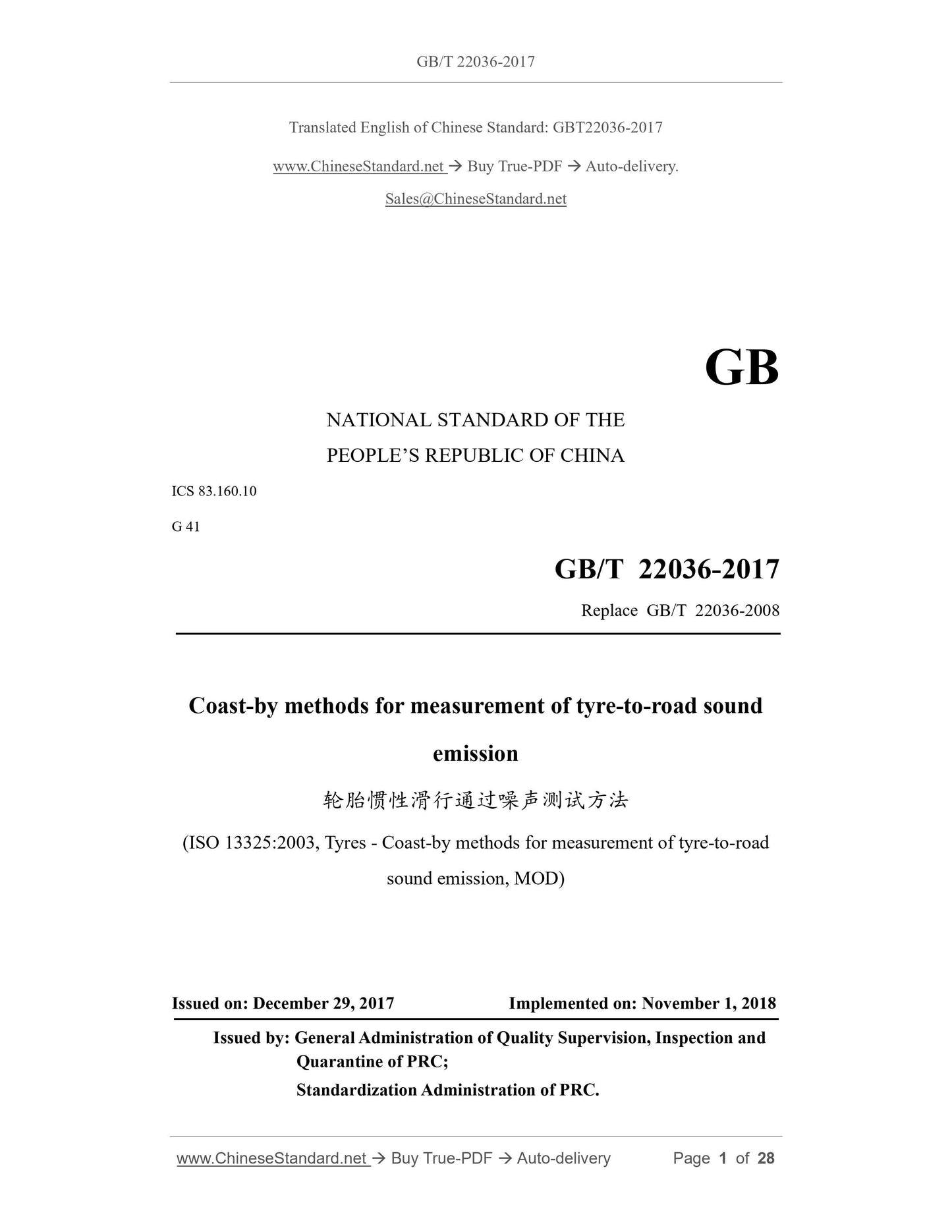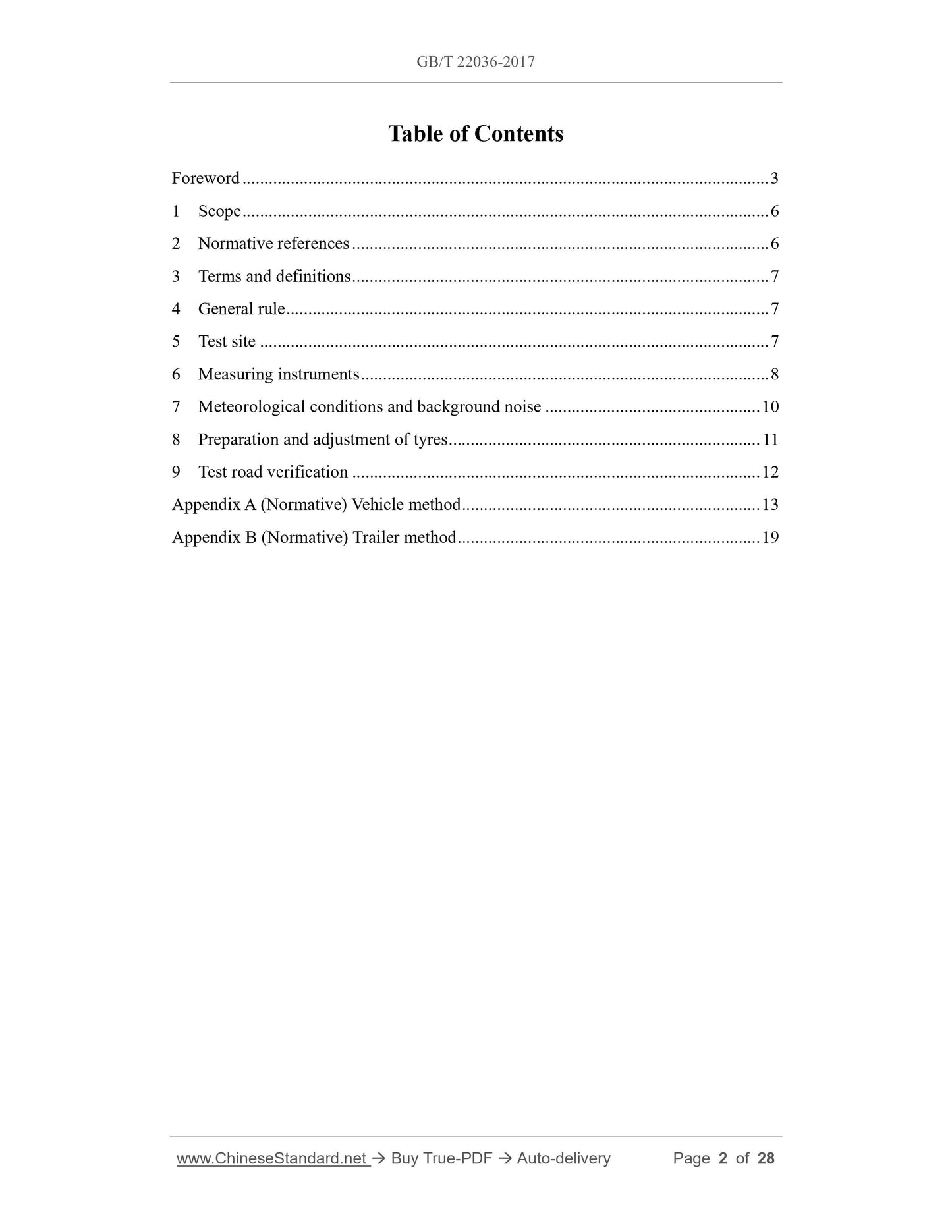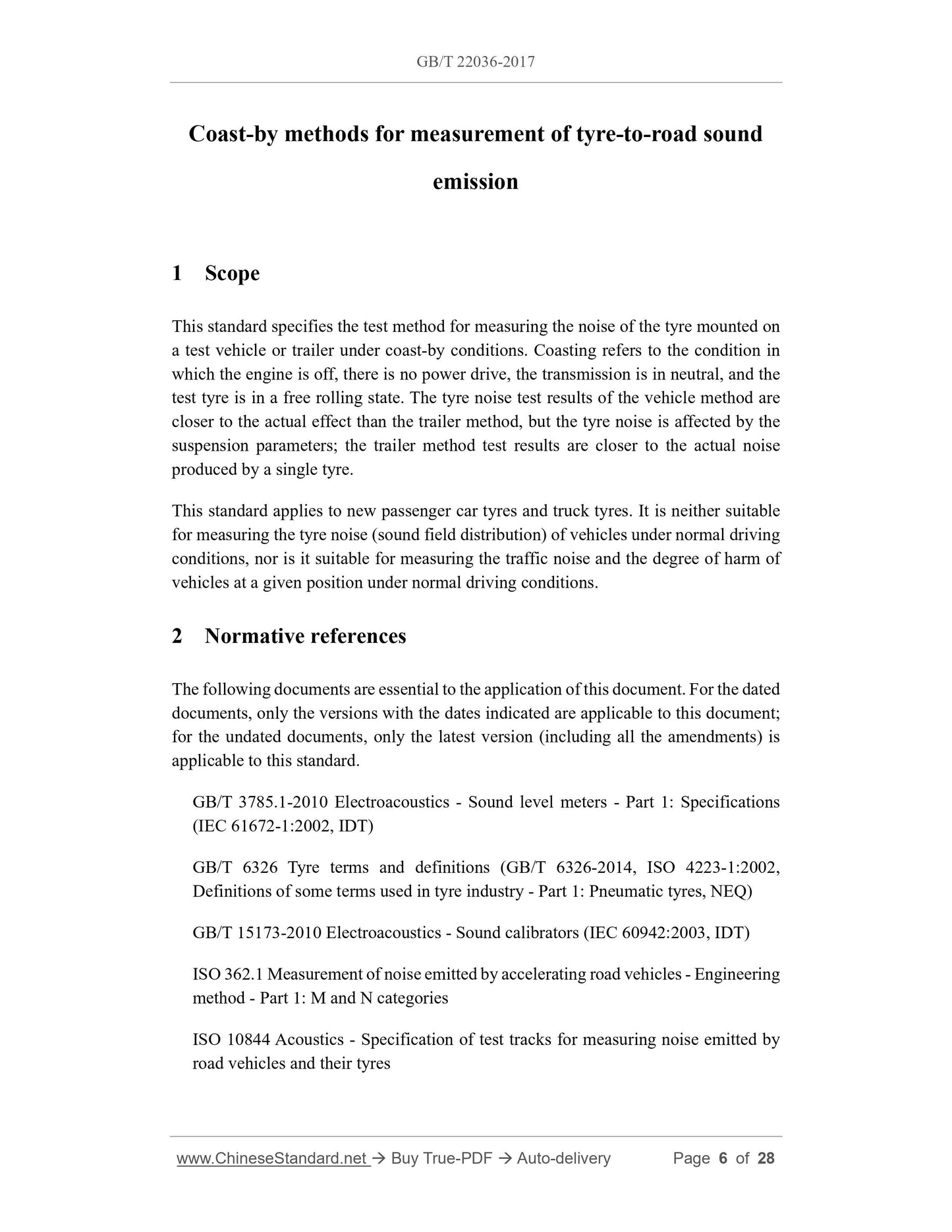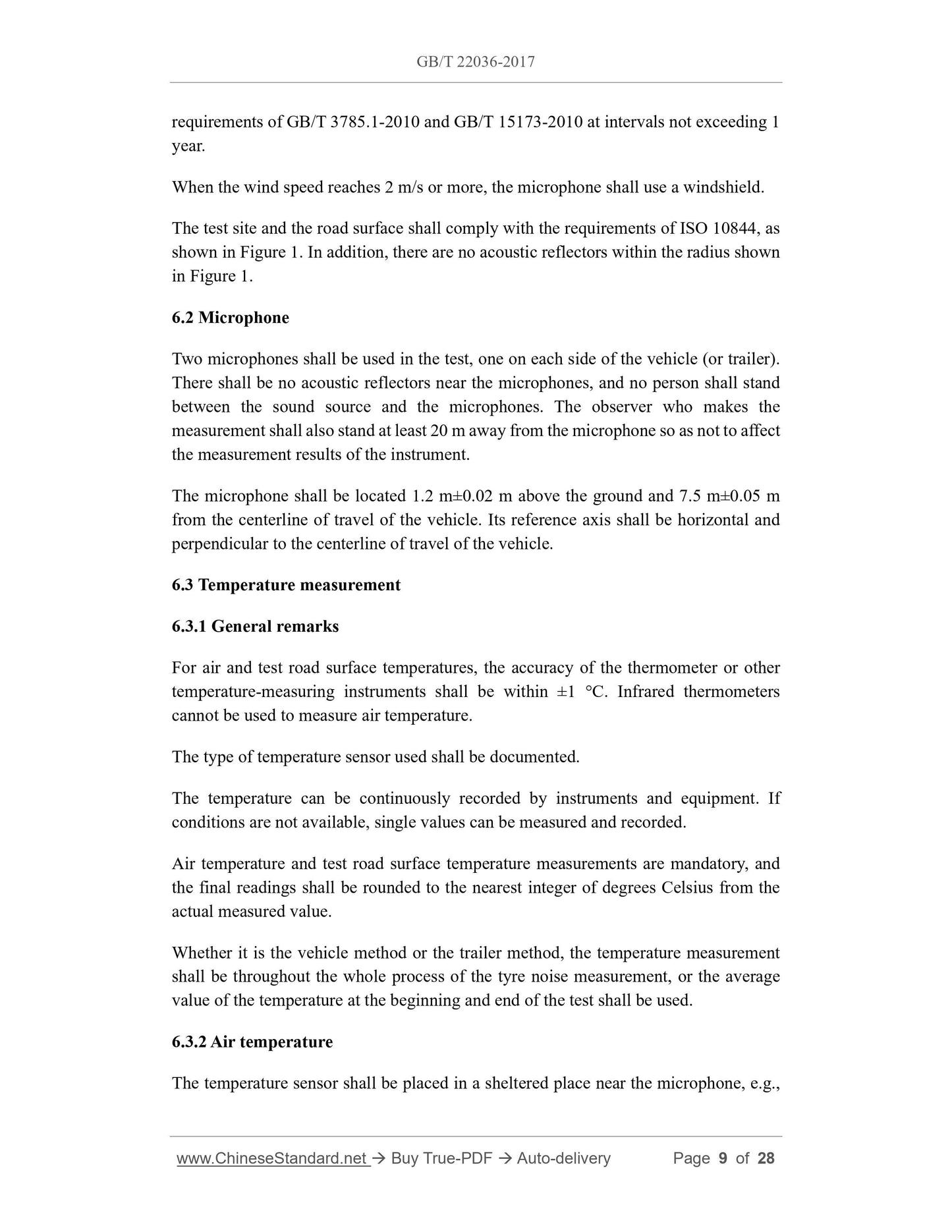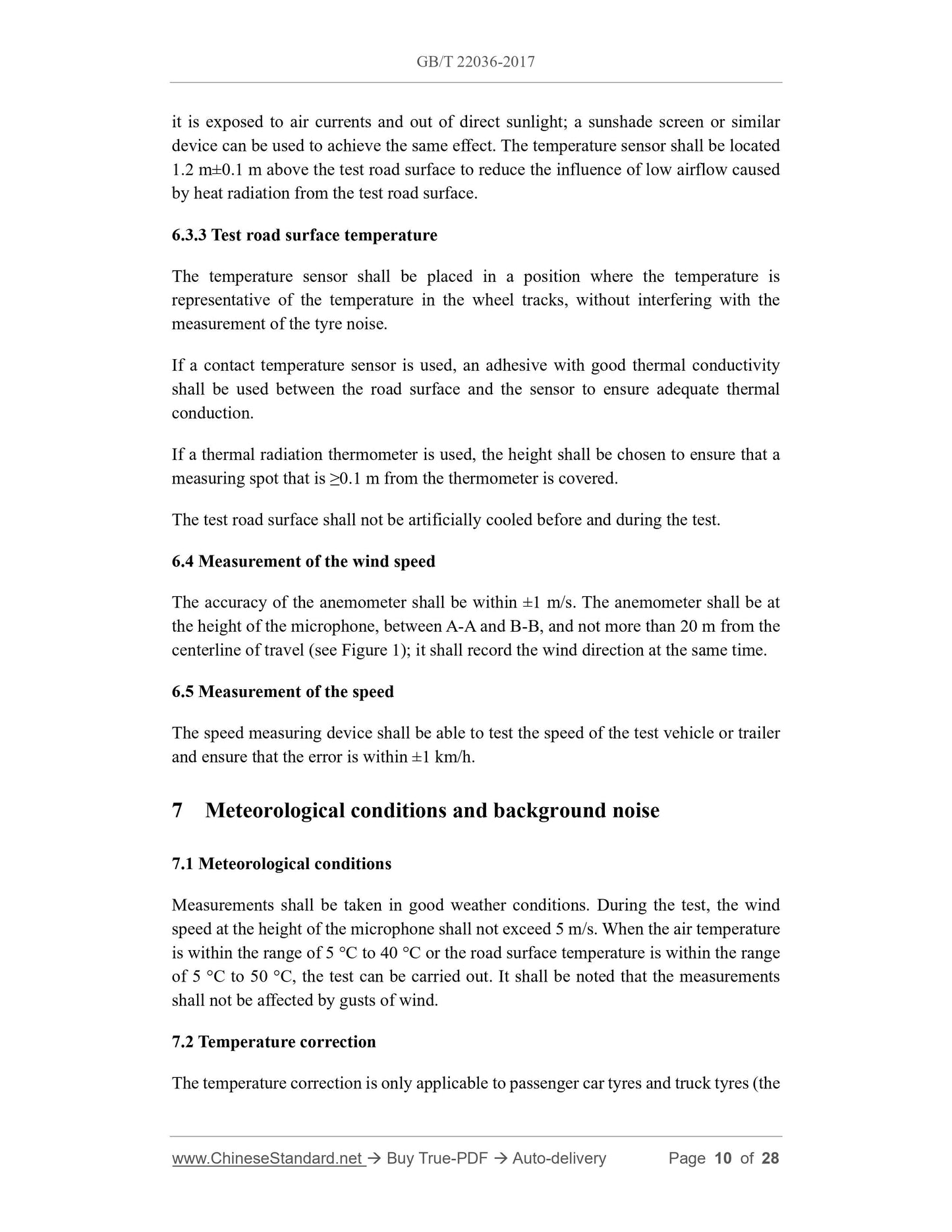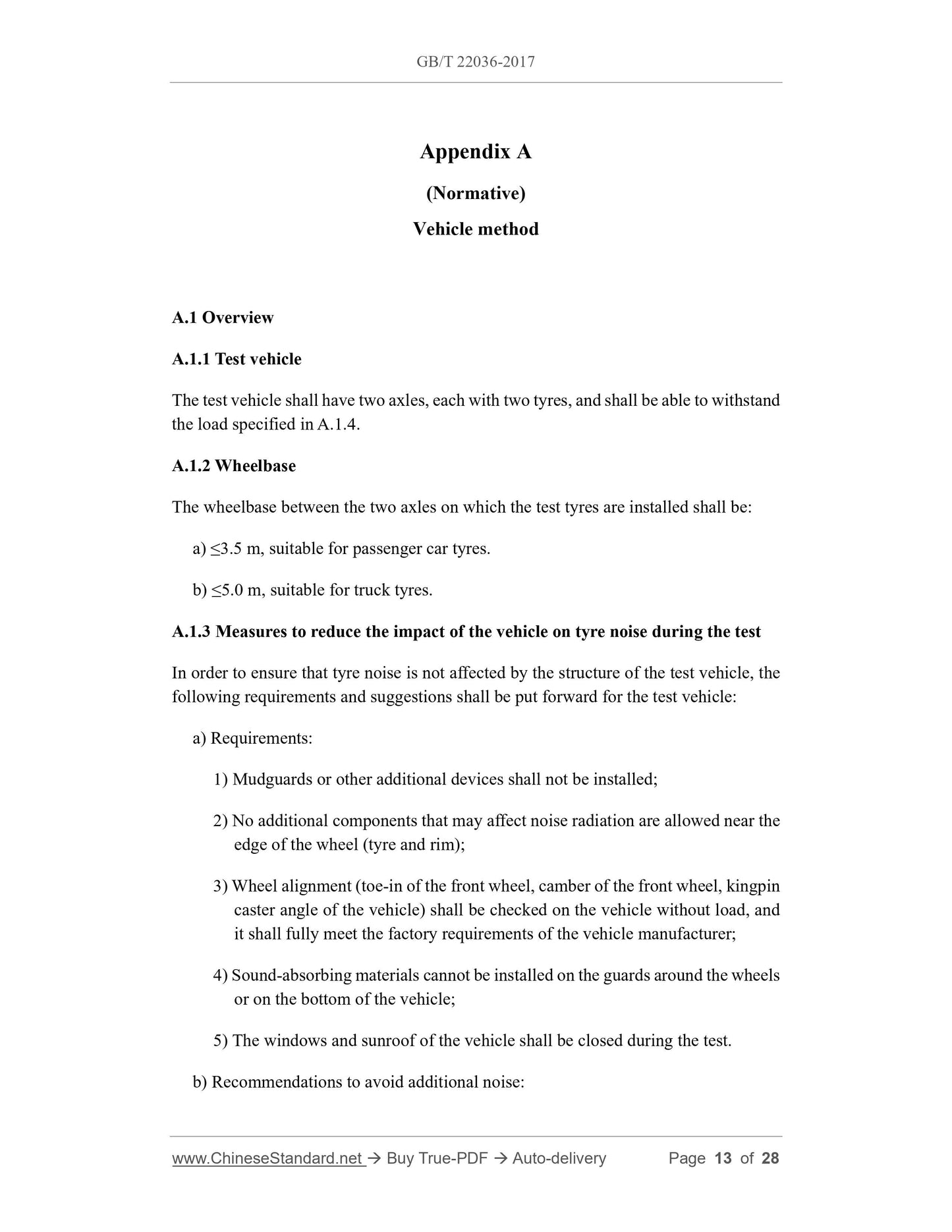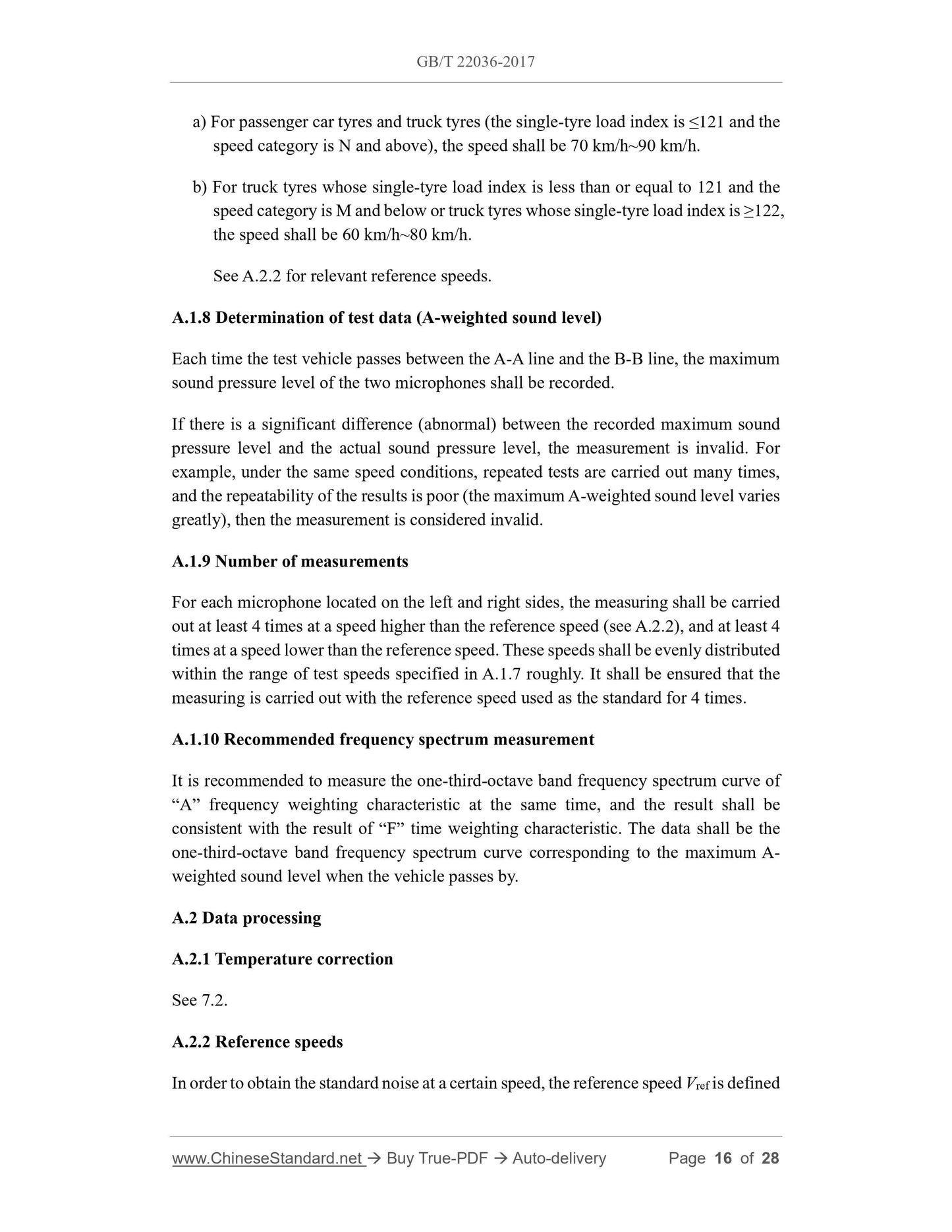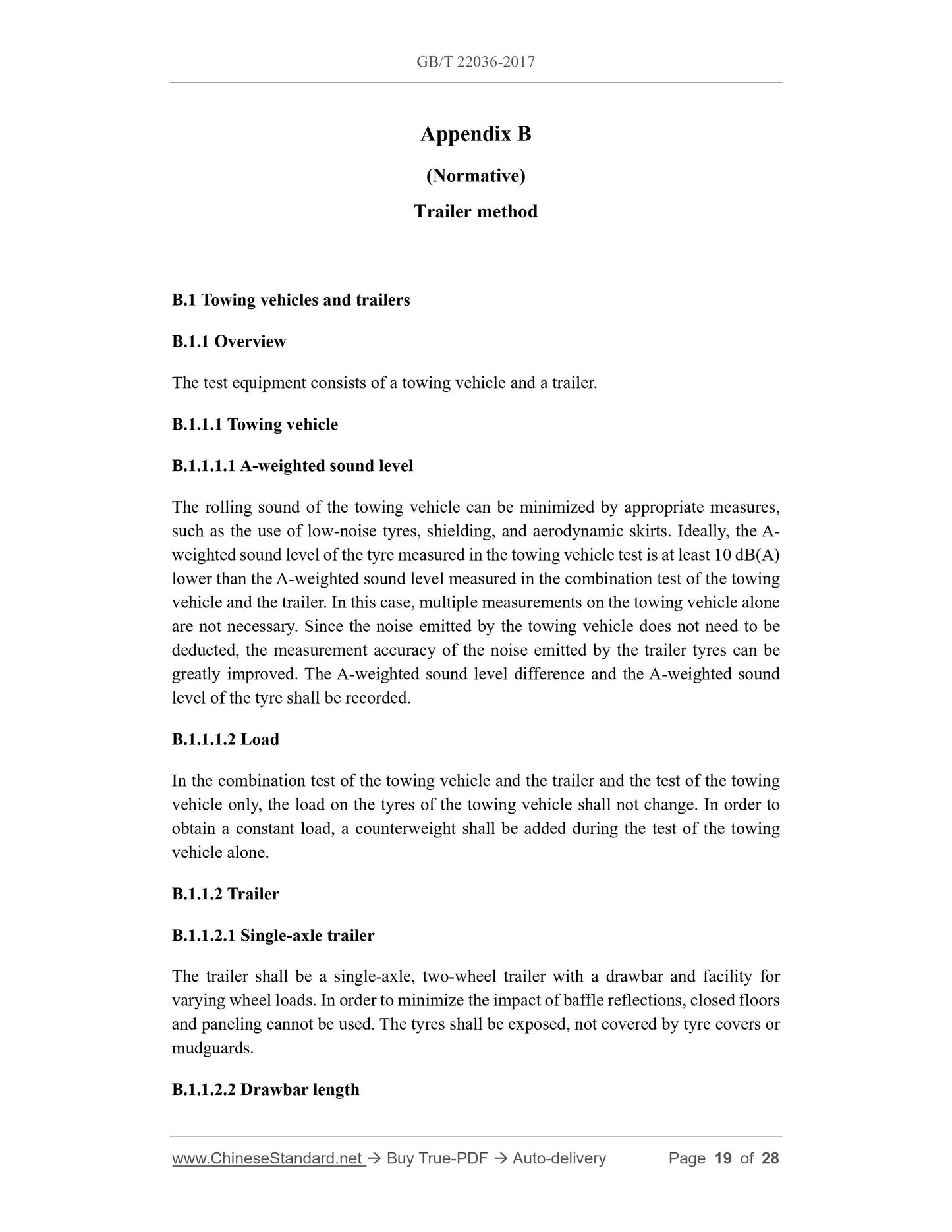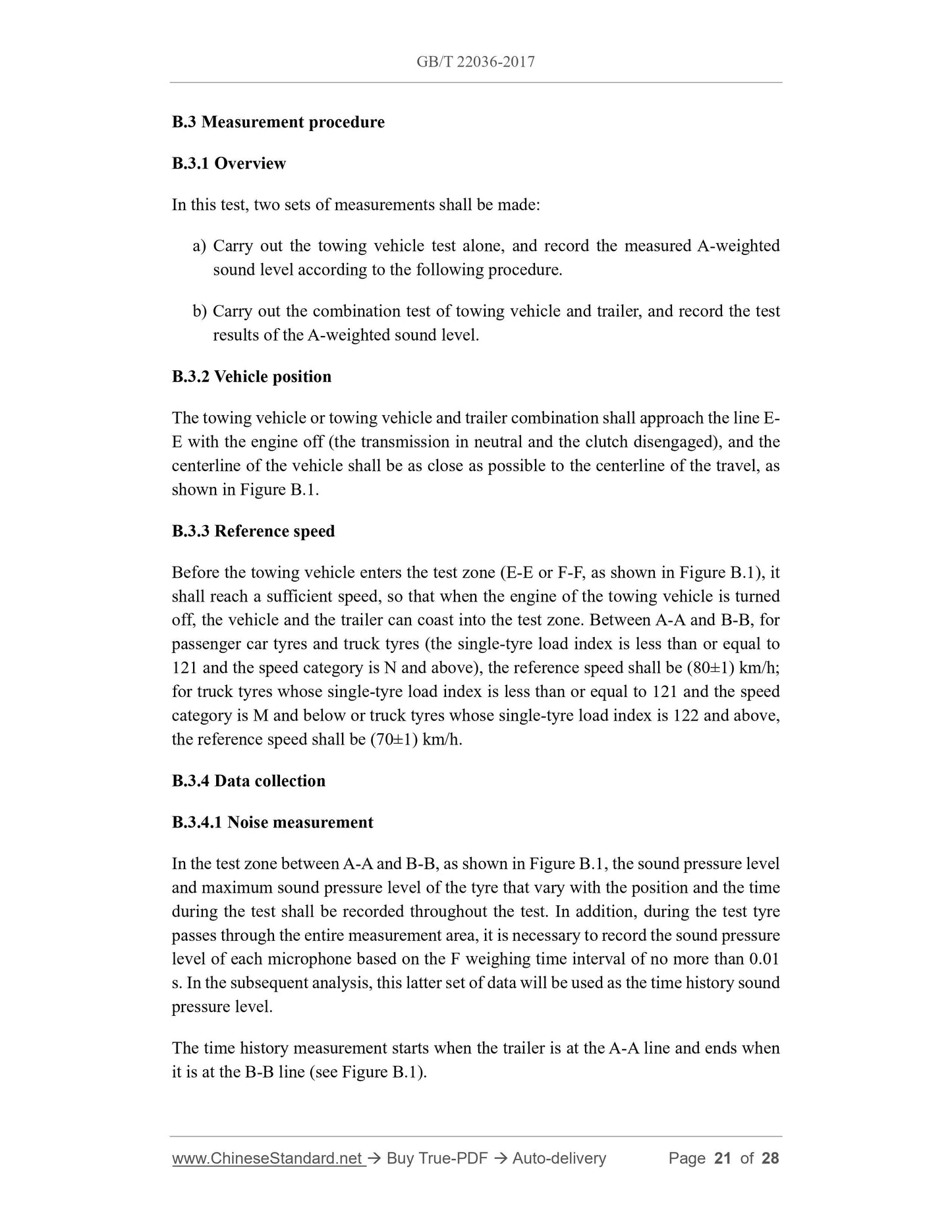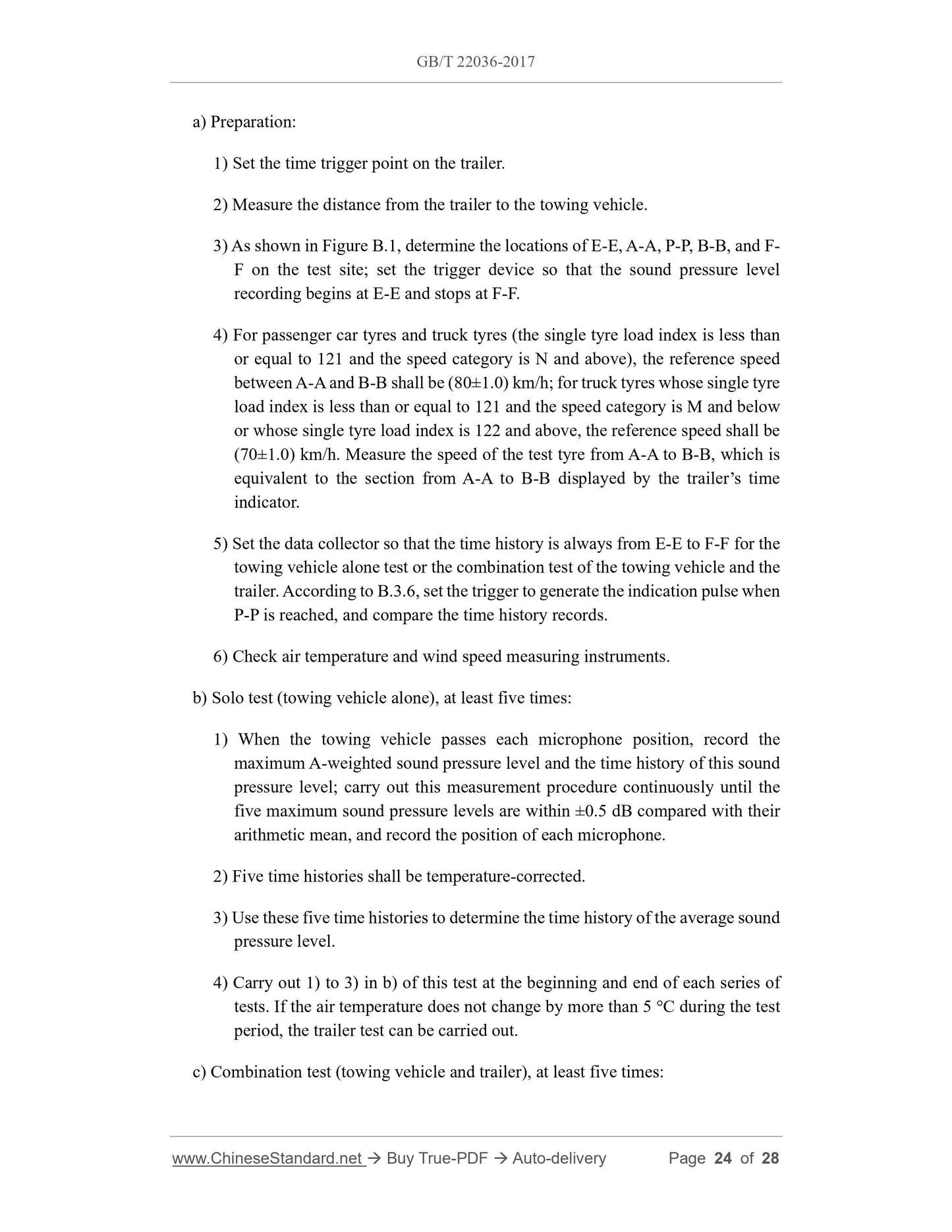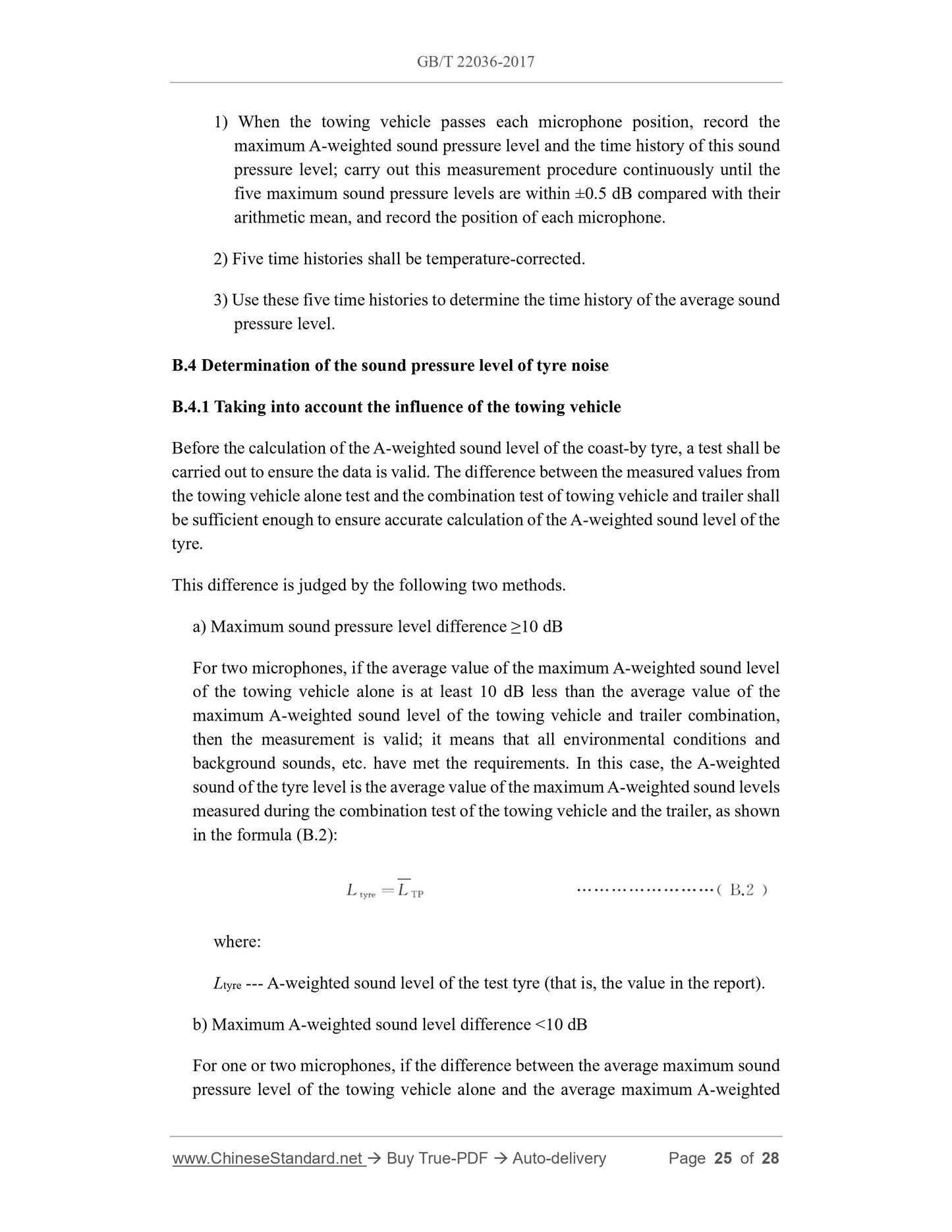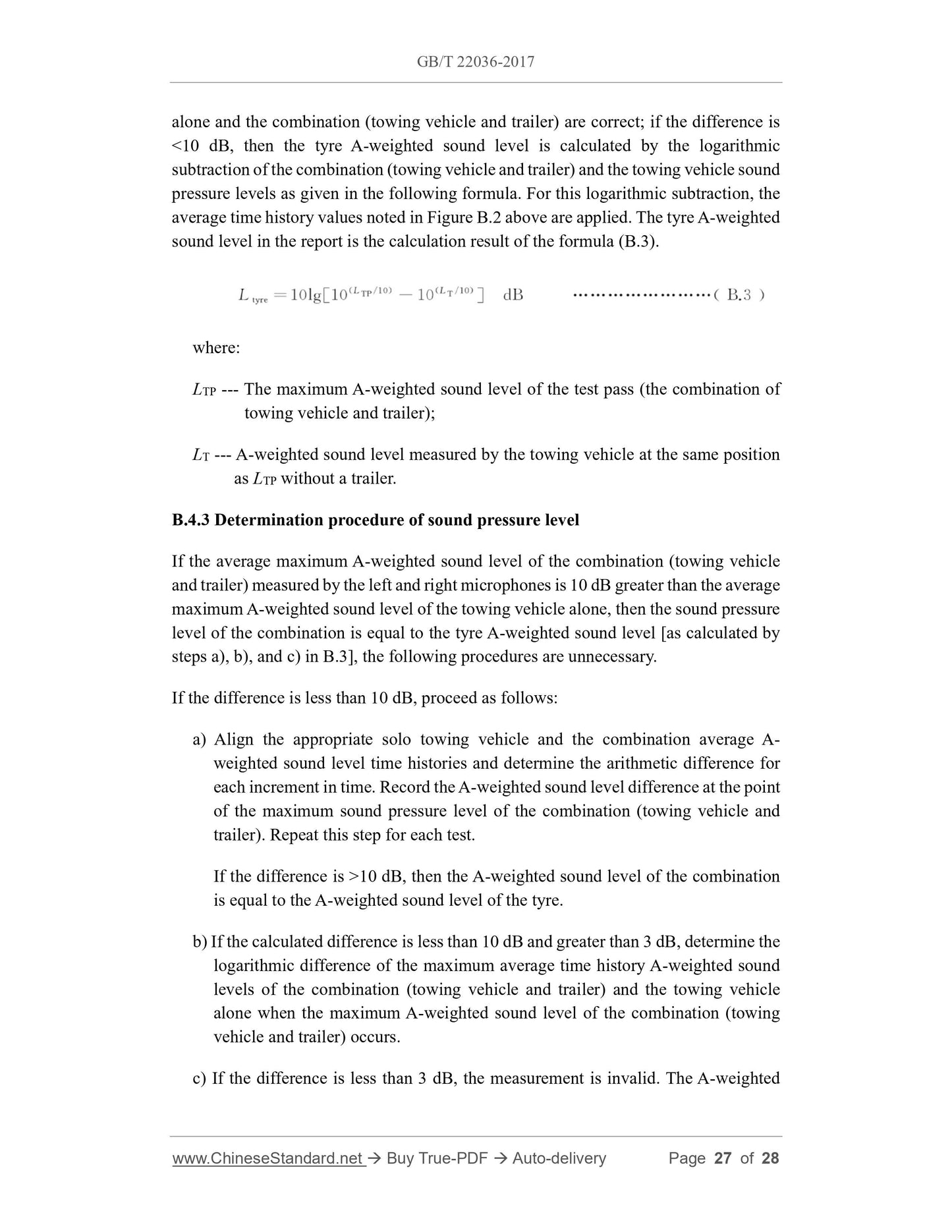1
/
of
12
www.ChineseStandard.us -- Field Test Asia Pte. Ltd.
GB/T 22036-2017 English PDF (GB/T22036-2017)
GB/T 22036-2017 English PDF (GB/T22036-2017)
Regular price
$215.00
Regular price
Sale price
$215.00
Unit price
/
per
Shipping calculated at checkout.
Couldn't load pickup availability
GB/T 22036-2017: Coast-by methods for measurement of tyre-to-road sound emission
Delivery: 9 seconds. Download (and Email) true-PDF + Invoice.Get Quotation: Click GB/T 22036-2017 (Self-service in 1-minute)
Newer / historical versions: GB/T 22036-2017
Preview True-PDF
Scope
This standard specifies the test method for measuring the noise of the tyre mounted ona test vehicle or trailer under coast-by conditions. Coasting refers to the condition in
which the engine is off, there is no power drive, the transmission is in neutral, and the
test tyre is in a free rolling state. The tyre noise test results of the vehicle method are
closer to the actual effect than the trailer method, but the tyre noise is affected by the
suspension parameters; the trailer method test results are closer to the actual noise
produced by a single tyre.
This standard applies to new passenger car tyres and truck tyres. It is neither suitable
for measuring the tyre noise (sound field distribution) of vehicles under normal driving
conditions, nor is it suitable for measuring the traffic noise and the degree of harm of
vehicles at a given position under normal driving conditions.
Basic Data
| Standard ID | GB/T 22036-2017 (GB/T22036-2017) |
| Description (Translated English) | Coast-by methods for measurement of tyre-to-road sound emission |
| Sector / Industry | National Standard (Recommended) |
| Classification of Chinese Standard | G41 |
| Classification of International Standard | 83.160.10 |
| Word Count Estimation | 18,184 |
| Date of Issue | 2017-12-29 |
| Date of Implementation | 2018-11-01 |
| Older Standard (superseded by this standard) | GB/T 22036-2008 |
| Regulation (derived from) | National Standards Bulletin 2017 No. 32 |
| Issuing agency(ies) | General Administration of Quality Supervision, Inspection and Quarantine of the People's Republic of China, Standardization Administration of the People's Republic of China |
Share
